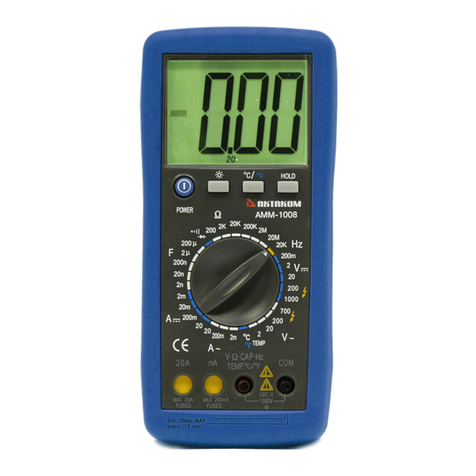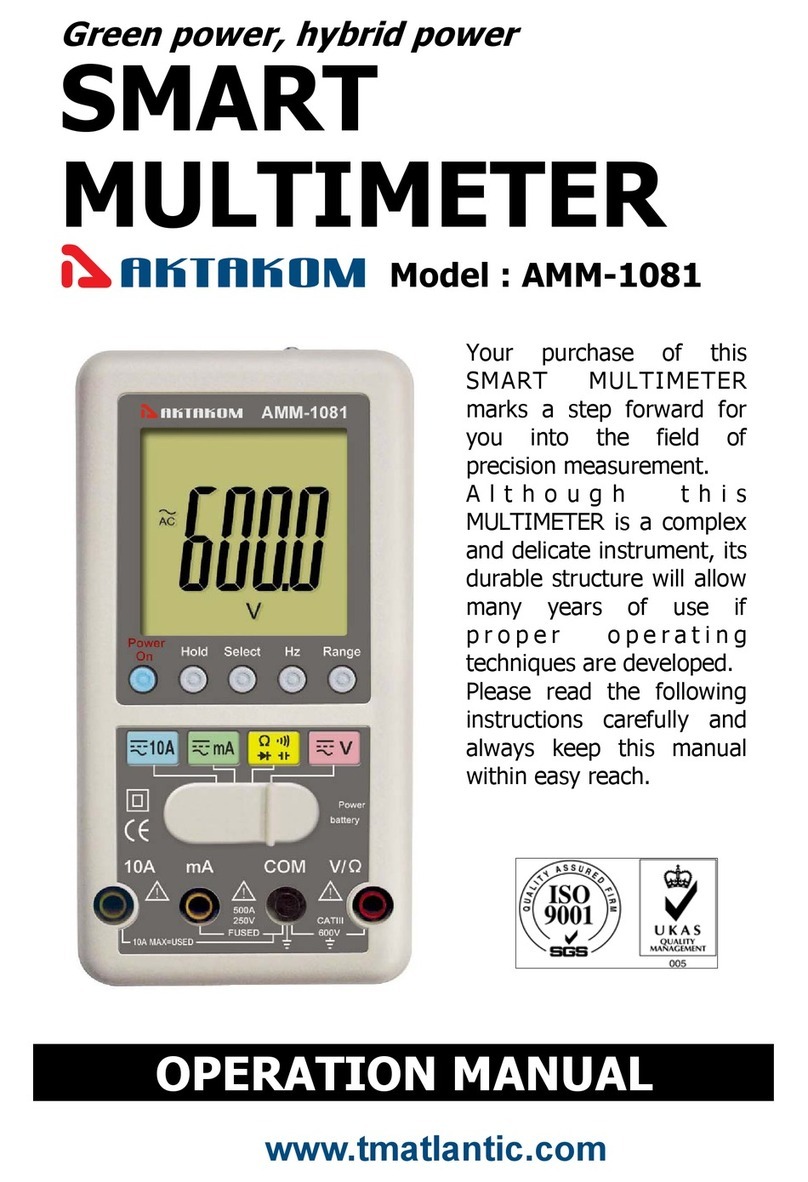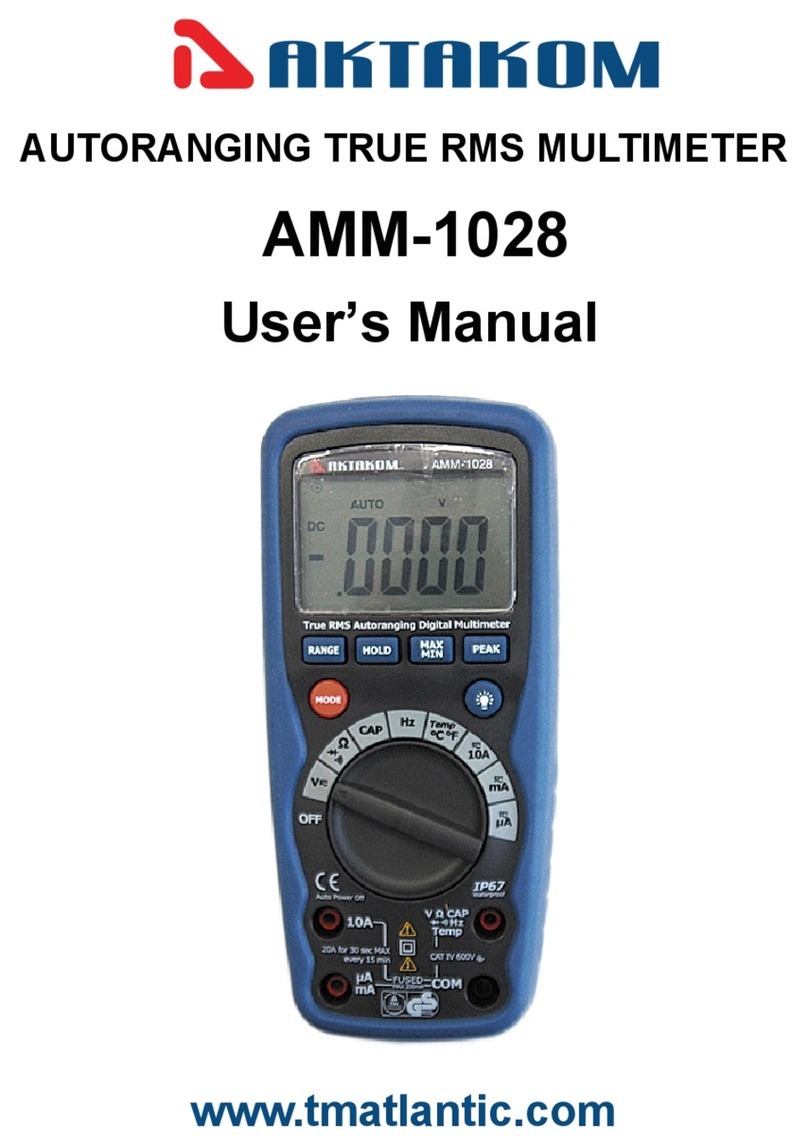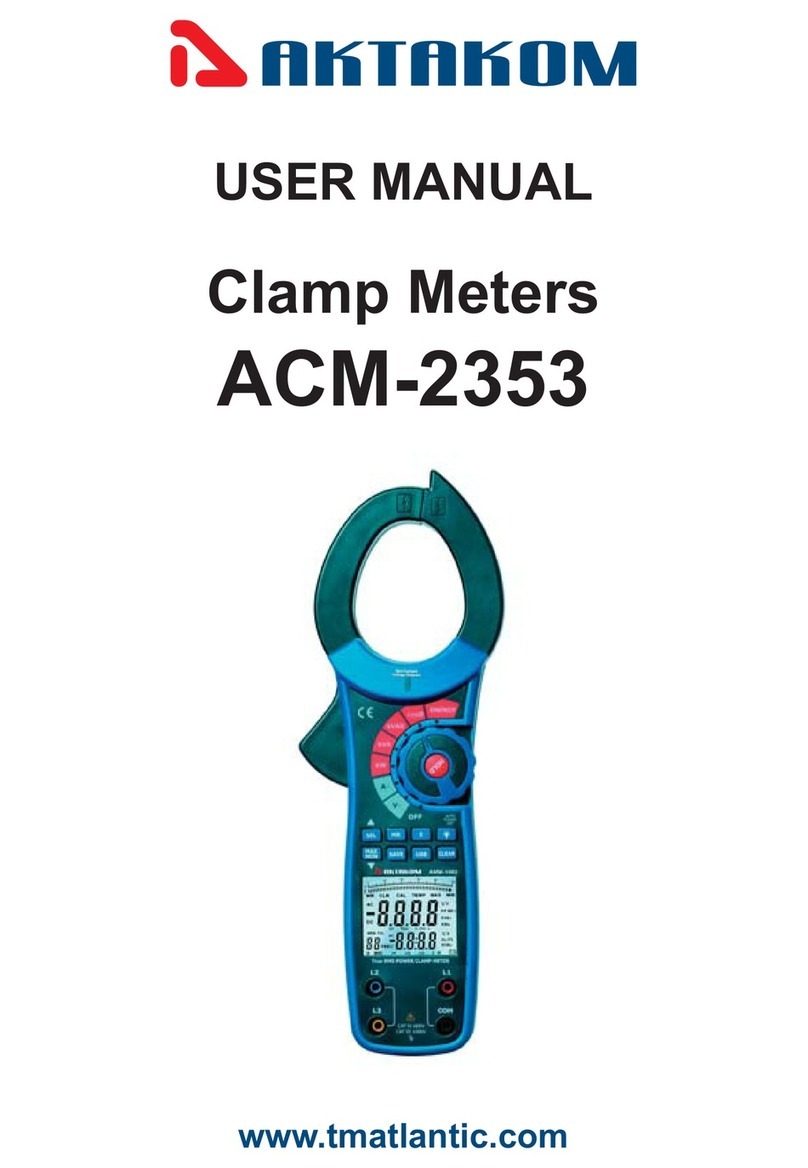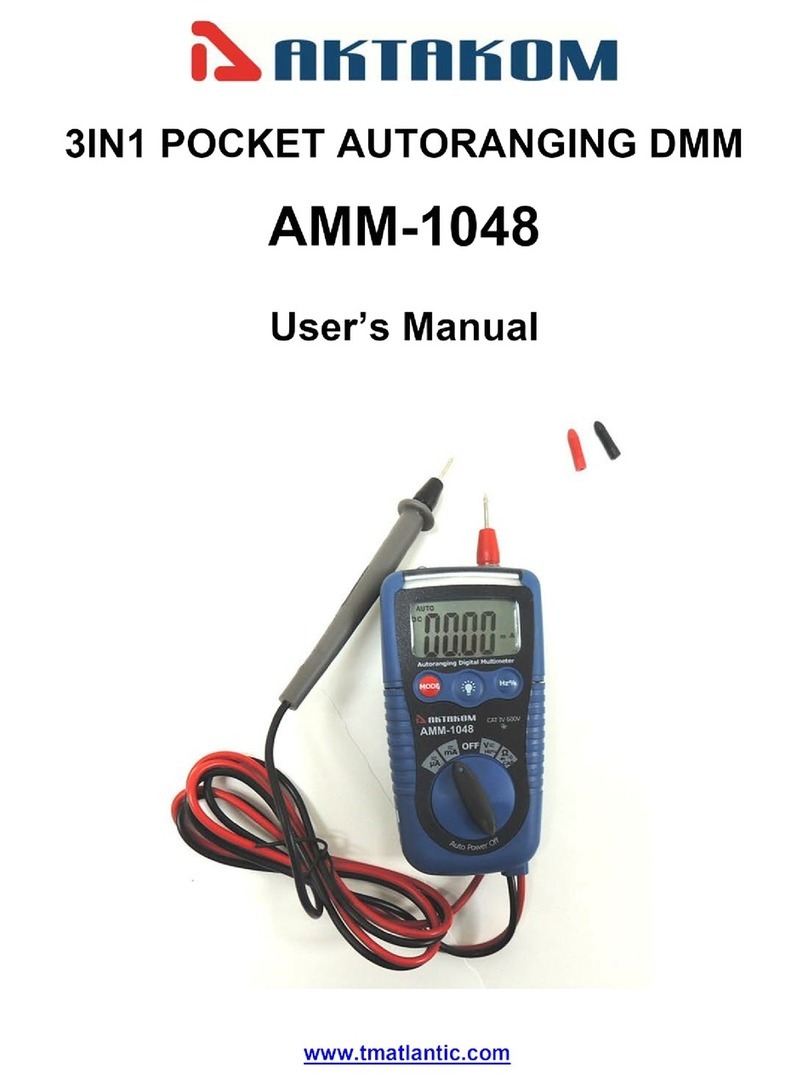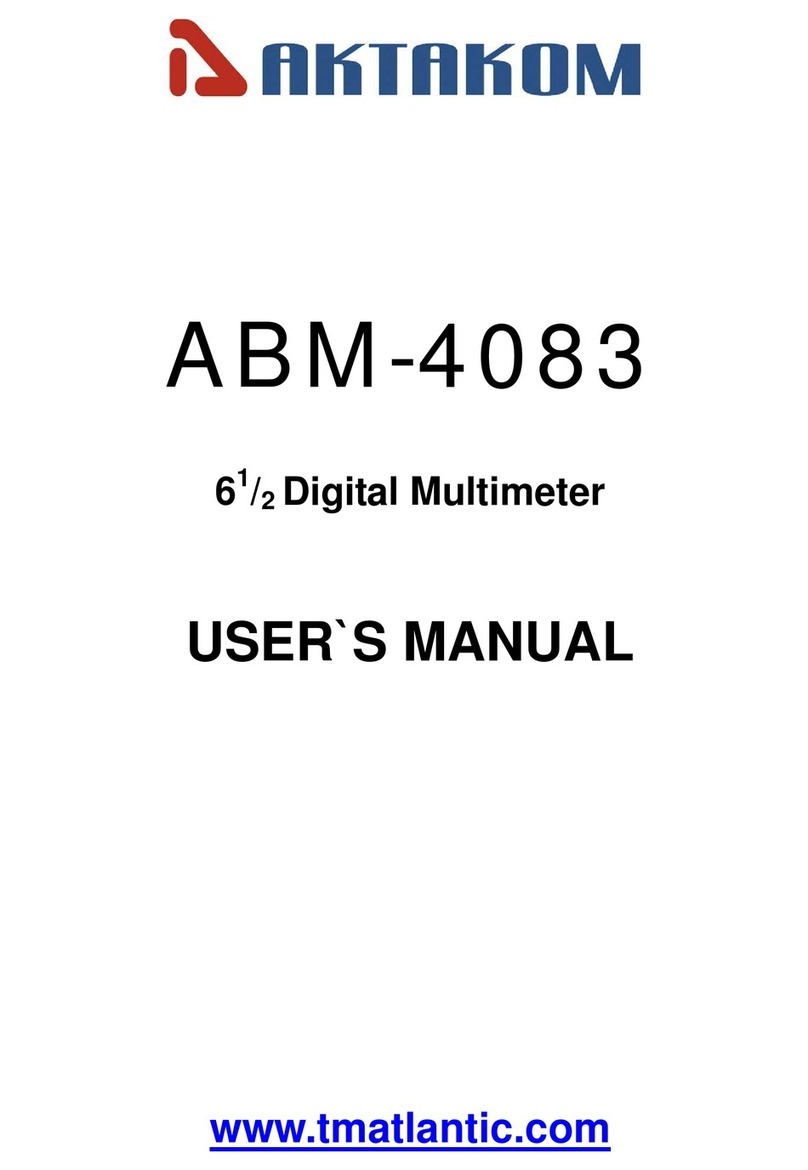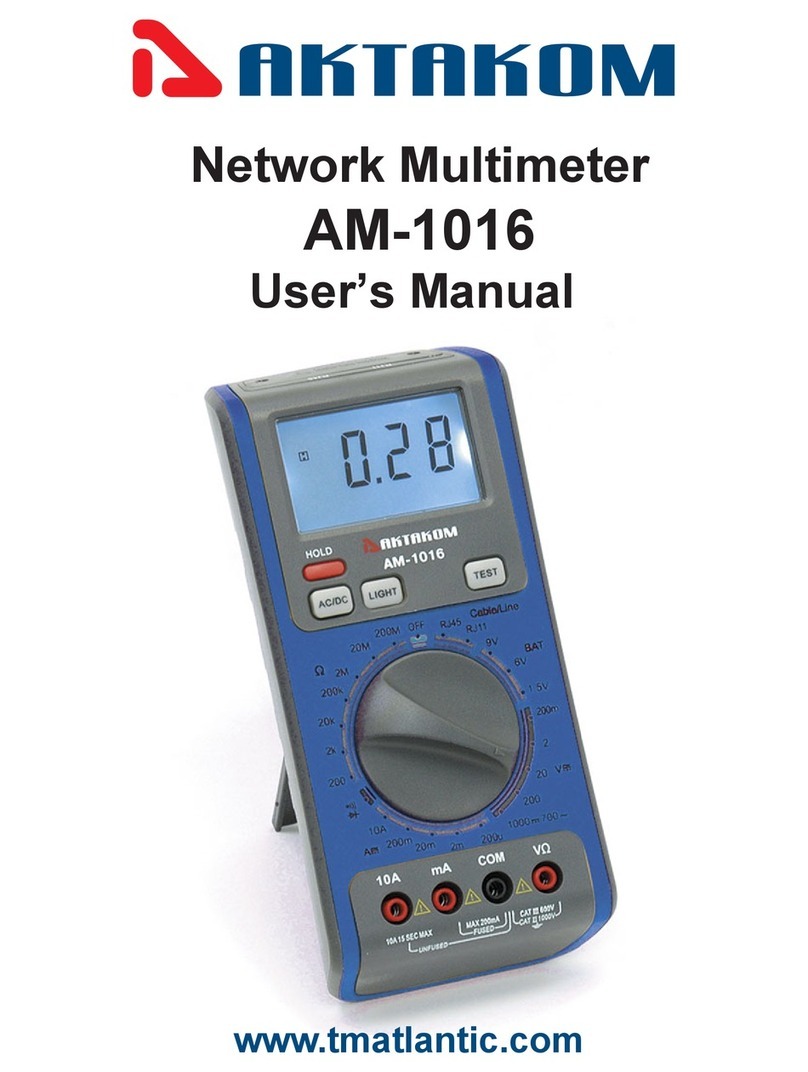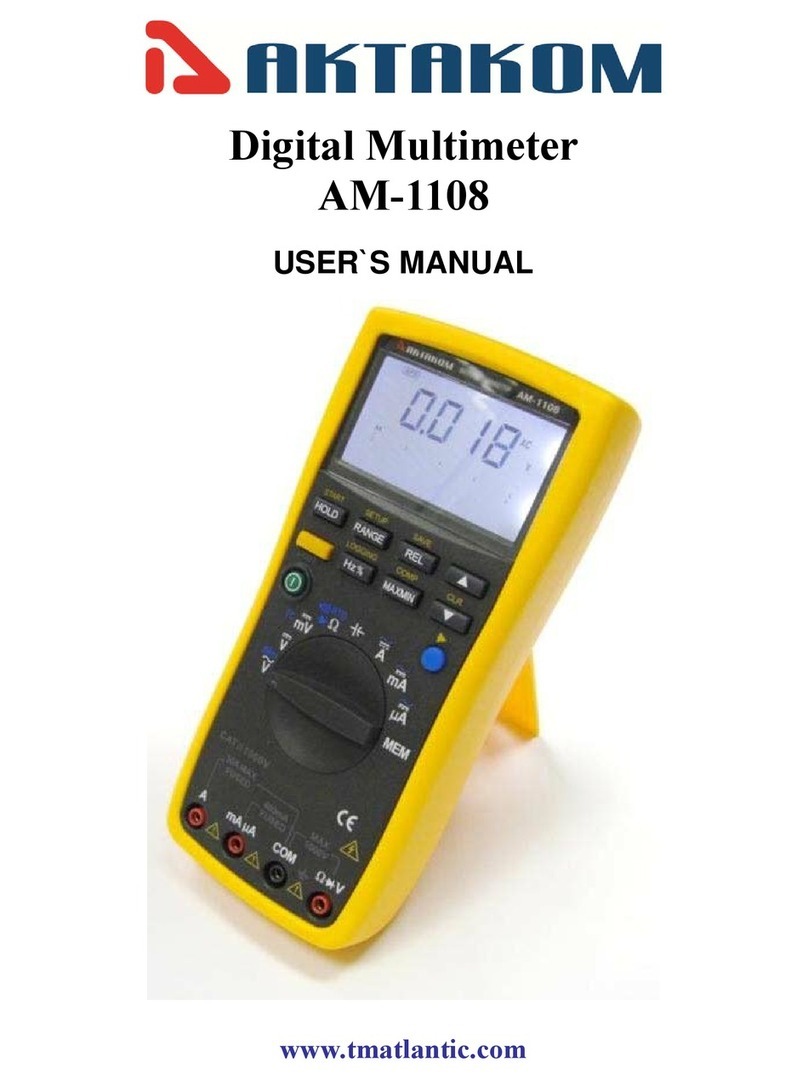
6600 COUNTS DIGITAL MULTIMETER
USER'S MANUAL
3
1.1.2 During use
* If the meter is used near noise generating equipment, be aware that display may become unstable or indicate large
errors.
* Do not use the meter or test leads if they look damaged.
* Use the meter only as specified in this manual; otherwise, the protection provided by the meter may be impaired.
* Use extreme caution when working around bare conductors or bus bars.
* Do not operate the meter around explosive gas, vapor, or dust.
* Verify a Meter's operation by measuring a known voltage. Do not use the Meter if it operates abnormally. Protection
may be impaired. When in doubt, have the Meter serviced.
* Uses the proper terminals, function, and range for your measurements.
* When the range of the value to be measured is unknown, check that the range initially set on the multimeter is the
highest possible or, wherever possible, choose the autoranging mode.
* To avoid damages to the instrument, do not exceed the maximum limits of the input values shown in the technical
specification tables.
* When the multimeter is linked to measurement circuits, do not touch unused terminals.
* Caution when working with voltages above 60Vdc or 30Vac rms. Such voltages pose a shock hazard.
* When using the probes, keep your fingers behind the finger guards.
* When making connections, connect the common test lead before connecting the live test lead; when disconnecting,
disconnect the live test lead before disconnecting the common test lead.
* Before changing functions, disconnect the test leads from the circuit under test.
* For all dc functions, including manual or auto-ranging, to avoid the risk of shock due to possible improper reading,
verify the presence of any ac voltages by first using the ac function. Then select a dc voltage range equal to or
greater than the ac range.
* Disconnect circuits power and discharge all high-voltage capacitors before testing resistance, continuity, diodes, or
capacitance.
* Never perform resistance or continuity measurements on live circuits.
* Before measuring current, check the meter's fuse and turn off power to the circuit before connecting the meter to
the circuit.
* In TV repair work, or when carrying out measurements on power switching circuits, remember that high amplitude
